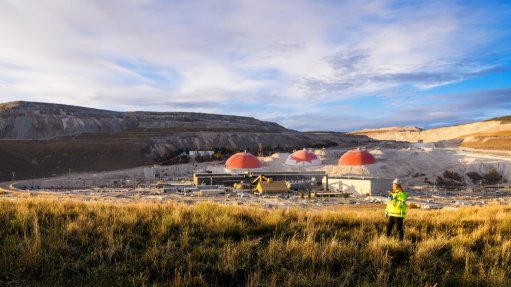HPC – when art becomes life
This article has been supplied.
By: Ben Selier - Vice President, Secure Power, Anglophone Africa at Schneider Electric
Oscar Wilde famously said, “Life Imitates Art”. And whilst this saying has so many real-world applications, one good example is undoubtedly High-Performance Computing (HPC). Like the groundbreaking Sci-Fi movie, The Matrix, HPC uses immense computational power to create and manage complex simulations, exploring digital worlds where programs and systems are visualised.
Bringing art to life, HPC is now a major contributor to industries like architecture, engineering, and real estate, where photorealistic visualisations have become an important part of the design and presentation equation. Today, professionals are developing 4K and 8K resolution digital models and renderings that truly offer an immersive and lifelike experience.
HPC is also an industry that is showing tremendous growth with the market valued 38.38 billion USD in 2023 and expected to grow at a CAGR of over 6.5% between 2024 and 2032, reaching 71 billion USD.
In practice
By leveraging parallel processing and advanced hardware, HPC systems can efficiently tackle even the most resource-intensive visualisation tasks. This, in turn, allows architects and engineers to produce detailed, true-to-life models that include realistic materials, lighting, and environmental effects.
Similarly, real estate professionals can offer prospective buyers virtual tours of properties that feel almost indistinguishable from reality, enhancing the customer experience.
In real estate, estate agents can visually highlight property's unique features, helping buyers envision its full potential. For comparison, while a laptop or desktop with a 3 GHz processor can perform three billion calculations per second, HPC solutions can scale far beyond this, thanks to its ability to divide tasks across thousands of compute nodes through parallel processing.
However, HPC is not just pretty to look at; it offers real-life, tangible, problem-solving benefits. For example, by identifying potential flaws early in the design process, architects and engineers can save on both time and costs.
In industries ranging from scientific research to financial modelling and gaming development, HPC has become indispensable. Financial firms use HPC to process large datasets, gaining insights that inform their market strategies. The gaming industry relies on HPC for creating and rendering 4K and 8K content, an essential part of developing immersive gameplay or streaming services.
Data centres form the backbone
HPC needs a robust infrastructure to function—specifically, a data centre capable of handling its immense processing needs. But these data centres can be costly, careful consideration of operational, financial, and technical factors.
This makes a compelling case for businesses to turn to hyperscale providers like Amazon and Microsoft, which offer HPC-as-a-service. By renting computational power on demand, organisations can scale their HPC capabilities without the burden of heavy upfront investments.
For those planning to build their own HPC data centres, several critical factors must be considered:
• Computing power: The heart of any HPC system, powerful processors, and efficient interconnectivity between computing nodes are essential for executing complex calculations seamlessly.
• Storage: HPC applications generate vast datasets. Storage solutions must accommodate this scale, offering rapid access to the data needed for ongoing tasks.
• Networking: High-speed, low-latency networks are the backbone of HPC systems, enabling smooth communication between components and preventing data transfer bottlenecks.
• Cooling: Given the intense computational load, HPC environments generate significant heat. Advanced cooling solutions, such as liquid cooling are required to manage thermal output.
By directly cooling high-power components like processors and GPUs, liquid cooling systems reduce thermal strain, enhance energy efficiency, and allow for denser computing clusters—ideal for the growing demands of HPC.
Article Enquiry
Email Article
Save Article
Feedback
To advertise email advertising@creamermedia.co.za or click here
Press Office
Announcements
What's On
Subscribe to improve your user experience...
Option 1 (equivalent of R125 a month):
Receive a weekly copy of Creamer Media's Engineering News & Mining Weekly magazine
(print copy for those in South Africa and e-magazine for those outside of South Africa)
Receive daily email newsletters
Access to full search results
Access archive of magazine back copies
Access to Projects in Progress
Access to ONE Research Report of your choice in PDF format
Option 2 (equivalent of R375 a month):
All benefits from Option 1
PLUS
Access to Creamer Media's Research Channel Africa for ALL Research Reports, in PDF format, on various industrial and mining sectors
including Electricity; Water; Energy Transition; Hydrogen; Roads, Rail and Ports; Coal; Gold; Platinum; Battery Metals; etc.
Already a subscriber?
Forgotten your password?
Receive weekly copy of Creamer Media's Engineering News & Mining Weekly magazine (print copy for those in South Africa and e-magazine for those outside of South Africa)
➕
Recieve daily email newsletters
➕
Access to full search results
➕
Access archive of magazine back copies
➕
Access to Projects in Progress
➕
Access to ONE Research Report of your choice in PDF format
RESEARCH CHANNEL AFRICA
R4500 (equivalent of R375 a month)
SUBSCRIBEAll benefits from Option 1
➕
Access to Creamer Media's Research Channel Africa for ALL Research Reports on various industrial and mining sectors, in PDF format, including on:
Electricity
➕
Water
➕
Energy Transition
➕
Hydrogen
➕
Roads, Rail and Ports
➕
Coal
➕
Gold
➕
Platinum
➕
Battery Metals
➕
etc.
Receive all benefits from Option 1 or Option 2 delivered to numerous people at your company
➕
Multiple User names and Passwords for simultaneous log-ins
➕
Intranet integration access to all in your organisation





















